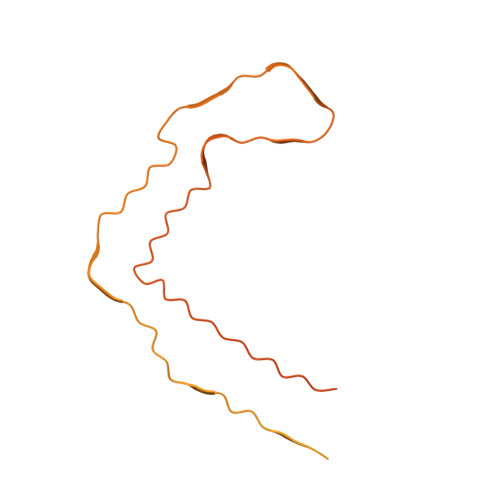Identical tau filaments in subacute sclerosing panencephalitis and chronic traumatic encephalopathy.
Qi, C., Hasegawa, M., Takao, M., Sakai, M., Sasaki, M., Mizutani, M., Akagi, A., Iwasaki, Y., Miyahara, H., Yoshida, M., Scheres, S.H.W., Goedert, M.(2023) Acta Neuropathol Commun 11: 74-74
- PubMed: 37143123
- DOI: https://doi.org/10.1186/s40478-023-01565-2
- Primary Citation of Related Structures:
8CAQ, 8CAX - PubMed Abstract:
Subacute sclerosing panencephalitis (SSPE) occurs in some individuals after measles infection, following a symptom-free period of several years. It resembles chronic traumatic encephalopathy (CTE), which happens after repetitive head impacts or exposure to blast waves, following a symptom-free period. As in CTE, the neurofibrillary changes of SSPE are concentrated in superficial cortical layers. Here we used electron cryo-microscopy (cryo-EM) of tau filaments from two cases of SSPE to show that the tau folds of SSPE and CTE are identical. Two types of filaments were each made of two identical protofilaments with an extra density in the β-helix region. Like in CTE, the vast majority of tau filaments were Type I, with a minority of Type II filaments. These findings suggest that the CTE tau fold can be caused by different environmental insults, which may be linked by inflammatory changes.
- Medical Research Council Laboratory of Molecular Biology, Cambridge, UK.
Organizational Affiliation:
















